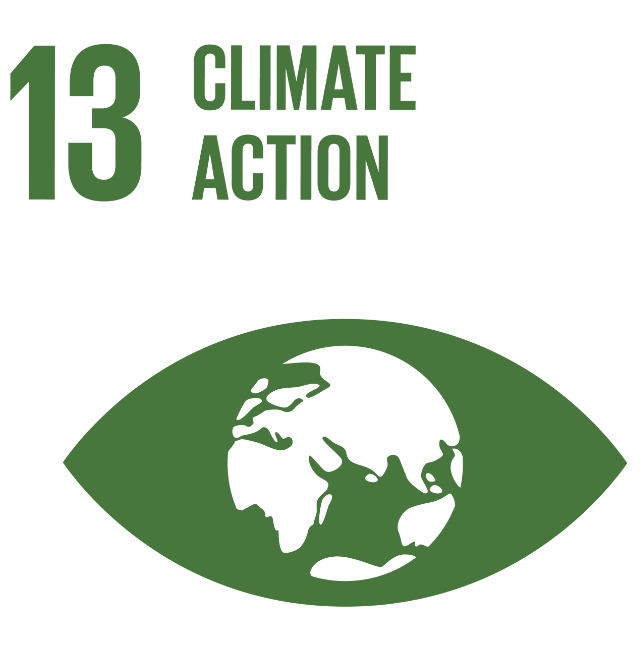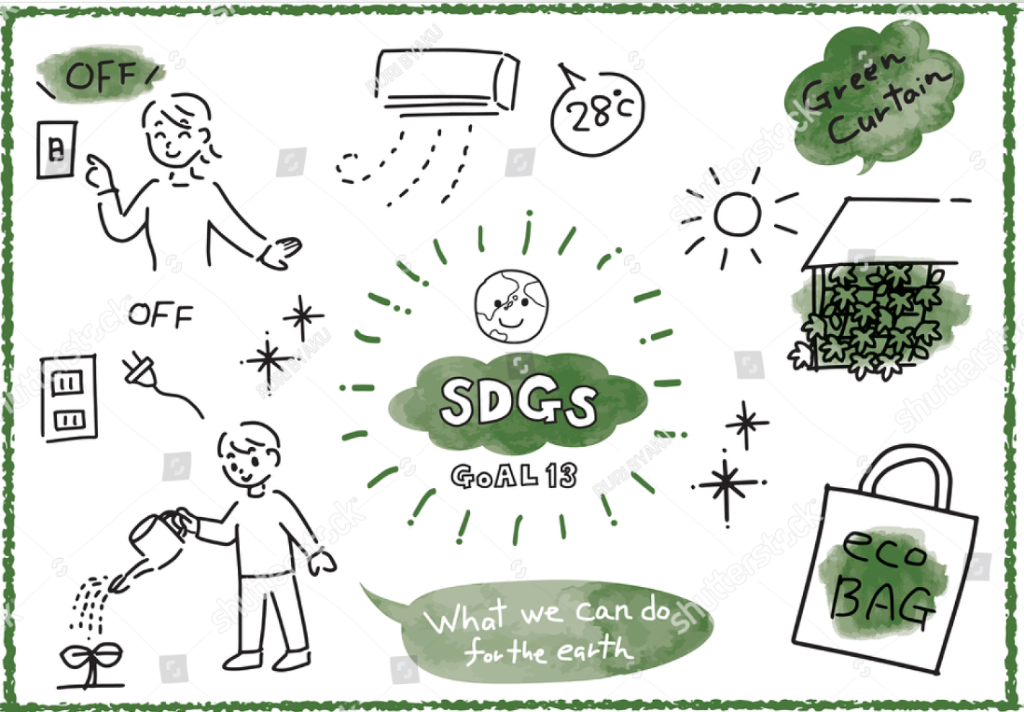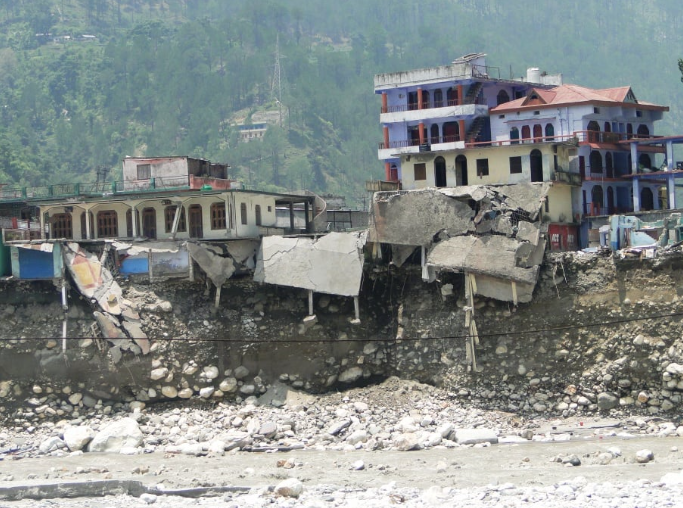Amid the relentless grip of the climate crisis, the majestic Himalayas, a breathtaking testament to nature’s artistic prowess, now find themselves grappling with unprecedented trials. The reverberations of climate change have cast an ominous shadow across this iconic landscape, reshaping its contours and testing its resilience in ways unfathomed before. In a poignant call to arms, Ms. Radha Bhatt, a luminary in the realm of environmental advocacy, took to the stage in a recent lecture, underscoring the urgency of steering the Himalayan region towards a future forged in sustainable development.
This undulating range, with its snow-clad peaks and verdant valleys, beckons us to acknowledge the symphony of challenges it faces. The symphony’s notes include the haunting melody of melting glaciers, the dissonant rhythm of erratic weather patterns, and the percussive crescendo of heightened natural disasters. The Himalayas, once a tranquil sanctuary of balance, now bear the scars of a planet in peril. Amidst this tumultuous backdrop, Ms. Radha Bhatt’s lecture assumed an almost prophetic significance—a clarion call that reached beyond the lecture hall, resonating through the mountains and valleys, compelling all to heed its message.
The lecture’s canvas was broad, painting a comprehensive picture of the symbiotic relationship between development and sustainability. It illuminated the nexus between climate change and its multifaceted repercussions, connecting the dots that weave together seemingly disparate elements. The Himalayan region, a crucible of ecological intricacies, is a living embodiment of this delicate equilibrium. With each utterance, Ms. Bhatt not only educated but ignited a spark of collective responsibility—a responsibility to harmonize the trajectory of development with the rhythms of nature, to ensure that progress is a harmonious dance rather than a discordant collision.
Embedded within the lecture’s core was the pivotal role of nationalization—a catalyst that can induce the transformational change necessary for a greener future. This concept, wielded adeptly, has the power to mold behavior, infusing it with environmentally conscious values. Ms. Radha Bhatt’s insights revealed the potency of this approach, charting a path where individual actions coalesce into a larger, collective movement towards sustainability.
As the echoes of the lecture reverberate, the Himalayan region stands at an inflection point—a juncture where action and inaction both wield consequences of immeasurable magnitude. The mandate is clear: to harness the insights shared by Ms. Radha Bhatt, to intertwine development aspirations with ecological stewardship, and to embolden a sense of ownership for the Himalayas’ fate. In this narrative, individuals, communities, governments, and global citizens all find themselves as protagonists, working in concert to script a tale of resilience, preservation, and hope—a tale that ensures the Himalayas remain not just a natural wonder, but a haven of sustainable wonderment for generations yet unborn.
Climate Crisis and Sustainability
The climate crisis poses a significant threat to the Himalayas, requiring urgent action to ensure the region’s sustainability and the well-being of its inhabitants. This section explores the role of different stakeholders in supporting Sustainable Development Goal (SDG) 13 – Climate Action, with a focus on the SADED Resource Centre’s initiatives.
Beyond Copenhagen: Strengthening Climate Action
The 2009 Copenhagen Climate Summit was a pivotal moment in the global fight against climate change. While international agreements like the Paris Agreement have laid the foundation for climate action, the real advancement is being achieved by local residents who are cooperating to fulfill their shared responsibilities. Nations and organizations must act decisively to reduce greenhouse gas emissions, boost renewable energy sources, and put climate-resilient practices in place in addition to diplomatic negotiations.
SDGs: A Holistic Approach to Climate Action
At the heart of the global endeavor for a sustainable future beats the resounding call to action encapsulated within Sustainable Development Goal 13 (SDG 13). Within the mosaic of the United Nations’ 17 Sustainable Development Goals, this particular goal stands as both a sentinel and a linchpin, intricately connected to a tapestry of objectives spanning poverty alleviation, education empowerment, healthcare accessibility, and environmental safeguarding. While SDG 13 embodies the focal point of climate action, its tendrils extend deeply and symbiotically into the realms of human welfare and ecological preservation.
The essence of SDG 13 demands more than piecemeal efforts; it beckons a comprehensive and synergistic approach. To effectively navigate the labyrinthine challenge of climate change, a strategy must be borne that does not merely scratch the surface but delves into the root causes. Climate change is an intricately interwoven tapestry woven from the threads of social, economic, and environmental intricacies. A successful trajectory toward realizing SDG 13 mandates a holistic understanding—a panoramic perspective that traverses these dimensions. It is an understanding that weaves together the socio-economic conditions that drive carbon emissions, the intricate dance between resource utilization and livelihoods, and the inextricable link between environmental degradation and societal well-being.
In this complex narrative of interconnectedness, the SADED Resource Centre stands as a vanguard of transformation. Its initiatives are not solitary endeavors, but rather intricate dances across multiple stages. By conscientiously aligning its projects with a multitude of Sustainable Development Goals, it unleashes a ripple effect that cascades beyond the boundaries of any single endeavor. In doing so, it underscores the fundamental interconnectedness of these goals—an interconnectedness that mirrors the intricacies of the challenges they collectively tackle.

Disaster Preparedness and Climate Resilience
The Himalayan region, a realm of breathtaking beauty and daunting grandeur, remains ensnared in the precarious grip of nature’s capriciousness. The tapestry of its landscapes is interwoven with the threads of unpredictability, as floods, landslides, and the menacing specter of glacial lake outburst floods (GLOFs) loom ominously. Yet, in the face of this formidable vulnerability, an imperative beckons—one that mandates a resolute, synchronized endeavor to foster resilience against the tempestuous forces that nature unfurls.
Catalyzing disaster preparedness and fortifying the ramparts of climate resilience requires a symphony of coordination and action. A comprehensive mosaic of measures must be painstakingly woven, embracing the entire spectrum of preparedness, adaptation, and infrastructure. Early warning systems, akin to vigilant sentinels, must be fortified to pierce the veil of uncertainty, bestowing communities with the precious gift of time to react and mitigate. Simultaneously, investments that unfurl under the banner of climate adaptation must burgeon, ensuring that our interventions harmonize with nature’s rhythms rather than clash against its cadence. The very foundations upon which societies are erected must be recast in the mold of sustainability, birthing an infrastructure that dances in harmony with the land rather than waging a discordant battle against it.
In this compelling narrative of resilience, the SADED Resource Centre emerges as a torchbearer, its beacon of hope illuminating the path ahead. Through a dynamic tapestry of community engagement and capacity-building initiatives, it pledges to empower those on the frontline—vulnerable communities grappling with the stark reality of climate-induced challenges. By fostering knowledge and skills, by nurturing a consciousness of their own agency in the face of adversity, these communities evolve into bastions of resilience. The goal is not merely survival, but the ability to thrive in defiance of the odds.
As the curtain rises on this epoch-defining act, the stage is set for a saga of transformation. The Himalayan region, synonymous with awe-inspiring beauty and intrinsic fragility, stands poised at the crossroads of destiny. The decisions we make today, the actions we undertake, reverberate through the ages, shaping the course of generations to come. The rallying call is clear: to unite, to forge an unbreakable alliance between human determination and the indomitable spirit of nature. Through shared effort and unwavering commitment, the Himalayan region can stand tall, resilient against the trials that nature presents, and usher in an era where the majestic harmony of its landscapes thrives hand in hand with the resilience of its communities.
Supporting SDG-13: SADED Resource Centre’s Initiatives
The SADED Resource Centre plays a crucial role in supporting SDG 13 – Climate Action and other related goals in the Himalayan region. Through its grassroots initiatives, the center focuses on:
- Fostering Community Empowerment: A paramount strategy involves actively involving local communities in the intricate web of decision-making processes. By granting them a seat at the table, their voices can be harmoniously woven into the fabric of policies that shape their lives and environment. Moreover, cultivating an astute awareness about the ever-pressing issue of climate change within these communities becomes instrumental. Through dynamic educational campaigns and accessible information dissemination, a ripple effect of consciousness can permeate, prompting each individual to become a steadfast guardian of our planet’s fragile equilibrium. This collective enlightenment, in turn, becomes the bedrock upon which sustainable practices can flourish.
- Igniting the Torch of Renewable Energy: As an indispensable means to curtail the ominous march of carbon emissions and mitigate the harrowing consequences of climate change, the clarion call for renewable energy must resound. Advocacy assumes a central role in propagating the manifold benefits of renewable energy sources. By fervently advocating for their adoption, and by providing the scaffolding necessary for their seamless integration, the carbon footprint can be dramatically curtailed, steering humanity toward a cleaner and more sustainable energy future.
- Nurturing Eco-friendly Practices: A resolute commitment to sustainable practices beckons us to reevaluate our interaction with the land. Embracing eco-friendly agricultural methodologies, whereby the cycles of nature are respected and nurtured, stands as a bulwark against environmental degradation. Coupled with this, proactive afforestation efforts garner importance, breathing new life into barren landscapes while bolstering the overall health of ecosystems. Through the judicious management of land, the delicate balance between human activities and nature’s intricate web can be upheld, thus fortifying the resilience of these ecosystems in the face of mounting challenges.
- Forging Resilience Through Disaster Preparedness: In the intricate dance between human settlements and nature’s capriciousness, disaster preparedness is a non-negotiable imperative. By equipping communities with comprehensive training, fortified infrastructure, and astute risk assessments, the vulnerabilities that disasters exploit can be effectively mitigated. This resilience-building endeavor not only safeguards lives and livelihoods but also engenders a sense of empowerment within communities, enabling them to stand steadfast in the face of adversity.
- Championing the Cause of Climate Advocacy: The clarion call for action in the realm of climate change necessitates a harmonized effort across all echelons of society. This entails the diligent advocacy for robust climate policies, capable of steering us away from the precipice of irreversible environmental decline. Galvanizing stakeholders to partake in meaningful climate action is paramount. This advocacy involves sensitizing individuals, corporations, and governments alike to the urgent need for change. By fostering a collective commitment to safeguarding our planet, the wheels of progress can be set in motion, propelling us towards a future defined by sustainability, resilience, and ecological harmony.
People, corporations, and governments all have a pivotal role to play in enhancing the sustainability and resilience of the Himalayan region. By throwing their weight behind the initiatives undertaken by the SADED Resource Centre, a substantial positive impact can be achieved. Through synergistic collaboration, a trajectory can be charted towards a future that prioritizes ecological conscientiousness, effectively safeguarding the invaluable natural endowment of the Himalayas. This collective endeavor will not only preserve the region’s ecological magnificence but also guarantee the sustenance of the myriad communities residing within these awe-inspiring landscapes, numbering in the millions.




